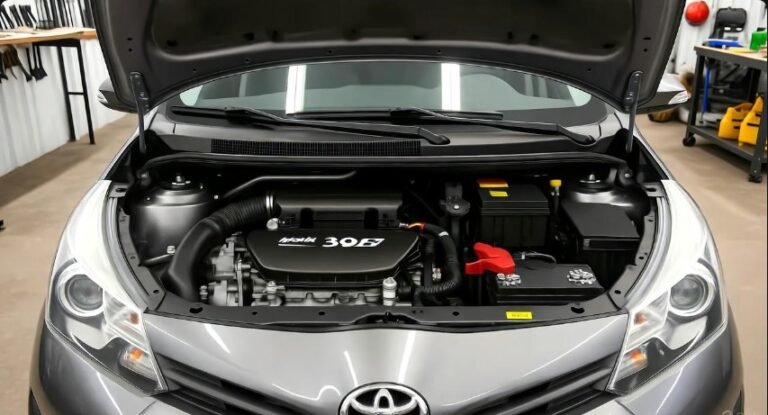Can I Just Sign a Car Title Over to Someone: The Ultimate Guide

Imagine this—you’re ready to give your old car to a friend, sell it to a neighbor, or maybe gift it to a family member. You hold the title in your hand and think, “Can I just sign a car title over to someone?” It sounds easy enough, right? A quick signature, a friendly handshake, and boom—new owner!
But here’s the catch: transferring a car title is not as simple as scribbling your name. It’s a legal process that involves paperwork, verification, and sometimes even state-specific rules that can make or break the deal. A car title is more than just a piece of paper—it’s proof of ownership, responsibility, and liability.
In this ultimate guide, we’ll break down everything you need to know before handing over your keys. We’ll talk about state regulations, insurance issues, loans, fees, and the right way to transfer ownership safely. So buckle up—this is your complete roadmap to signing over a car title the right way.
What Is a Car Title and Why It Matters

A car title (often called a pink slip) is an official document issued by your state’s Department of Motor Vehicles (DMV). It proves who owns a vehicle. Without a valid title in your name, you can’t legally sell or transfer your car.
Think of it as the car’s “birth certificate.” It includes vital details like:
-
The vehicle identification number (VIN)
-
The make, model, and year
-
The owner’s name and address
-
Any lienholder (if you financed the car)
-
The odometer reading
When you transfer a car, the title must reflect the new owner’s information. Simply signing the back of the title without submitting it properly could lead to legal headaches later. For example, if the new owner gets a ticket or causes an accident before transferring the title officially, those penalties could fall on you.
Here’s a quick look at what’s usually required:
| Step | What It Means | Why It’s Important |
|---|---|---|
| Sign the title | You, as the seller, sign it over | Transfers initial ownership |
| Provide buyer info | Add buyer’s name, address, and sale details | Keeps record of who now owns the car |
| Submit to DMV | Buyer registers the title | Legally completes transfer |
| Pay fees | Usually small transfer cost | Makes transaction valid |
| Notify insurance | Update or cancel policy | Avoids future liability |
Skipping any of these steps can create major problems—like remaining legally responsible for a car you no longer own.
Can You Really Just Sign a Car Title Over to Someone?
The short answer? No, not completely. While signing is an essential step, it’s only the beginning of the transfer process. Each state in the U.S. has its own rules, but most require a few common steps beyond the signature.
Think of it this way: signing the title is like opening the door to the process—but to actually walk through, you need documentation, fees, and sometimes notarization.
Here’s what you usually need to do besides signing:
-
Fill in the buyer’s details (name, address, sale price)
-
Record the date of sale and mileage
-
Include a bill of sale
-
Pay title transfer fees
-
Submit everything to your local DMV
-
In some states, have the document notarized
Skipping any of these can make the transaction invalid. So even though it feels convenient to “just sign,” that shortcut could cost you more than a few minutes of time—it could lead to fines or even legal disputes.
Understanding State Regulations
Every state handles car title transfers a little differently. What’s acceptable in California might not fly in Texas or Florida. Some states require both the buyer and seller to appear in person at the DMV, while others allow online or mail-in transfers.
Here are a few examples to show how state laws differ:
| State | Notary Required? | Bill of Sale Needed? | Unique Requirement |
|---|---|---|---|
| California | No | Yes | Must report transfer within 5 days |
| Texas | Yes | Recommended | Seller must sign “Application for Texas Title” |
| Florida | Sometimes | Yes | Title transfer must include odometer reading |
| New York | No | Yes | Must submit “Statement of Transaction” form |
| Ohio | Yes | Yes | Title must be signed in front of notary |
If you skip these steps, your title might not officially transfer—meaning you’re still on the hook if something goes wrong. It’s like giving someone your house keys but never changing the name on the deed.
So before signing, check your state DMV website or call them directly. It’s better to spend 10 minutes confirming than face 10 months of legal trouble later.
Liability and Responsibility After Signing a Car Title
Here’s something many people overlook: when you sign a car title over to someone, you’re not just handing over the vehicle—you’re also transferring liability. That means you’re no longer responsible for tickets, damages, or accidents—if the title is transferred correctly.
But if the new owner doesn’t register the vehicle in their name, you could still be legally tied to it. Imagine receiving a speeding ticket in the mail weeks after selling your car—it happens more often than you’d think!
That’s why most states require sellers to file a notice of transfer or release of liability. This document tells the DMV that you’ve sold the car and are no longer responsible for it.
Here’s what happens if you don’t do that:
-
You might get billed for parking tickets.
-
You could be contacted for toll violations.
-
If the car is in an accident, insurance investigators could still call you.
-
You could even face tax issues if the vehicle remains registered under your name.
To stay safe, always:
File a release of liability form right after the sale.
Keep a copy of the bill of sale for your records.
Double-check that the buyer has completed their DMV paperwork.
It’s a small effort that protects you from big problems later.
What If There’s a Loan or Lien on the Car?
Here’s a tricky scenario: what if you haven’t finished paying off your car loan yet? Can you still sign the title over?
Not until the lien is released.
A lien means your lender still technically owns part of the car. Until they’re paid off, the title isn’t truly yours to transfer. The lender’s name will be listed on the title, and you’ll need their permission to complete the transfer.
To fix this:
-
Pay off the remaining balance with your lender.
-
Ask for a release of lien letter or an updated title showing you as the full owner.
-
Once that’s done, you can sign the title over like normal.
If you try to transfer it before clearing the lien, the DMV will reject the process—and the buyer might lose confidence in the deal. It’s like trying to sell a house that still has a mortgage under someone else’s name—it just won’t work.
Insurance Considerations Before and After the Transfer
Insurance plays a big role in this process, too. Once you sign a car title over to someone, your insurance no longer covers that vehicle—so it’s essential to handle the timing carefully.
Before handing over the car:
-
Keep your insurance active until the sale is finalized.
-
Make sure the buyer has their own insurance ready to start immediately after.
After the sale:
-
Cancel or adjust your policy.
-
Notify your insurer that the car has been sold.
If you cancel too early, you might leave yourself unprotected. If you wait too long, you might pay for coverage you don’t need. The sweet spot is to update your insurance the same day the buyer officially takes ownership at the DMV.
It’s all about protecting yourself from the unexpected—and in the world of car sales, surprises can be expensive.
Why You Should Seek Professional Guidance
Let’s be honest—vehicle transfers can get complicated. Between state regulations, paperwork requirements, and financial considerations, one wrong step can cause a big delay or even legal trouble.
That’s why it’s often smart to consult a DMV representative, notary, or attorney who specializes in car title transfers. They can guide you through the process, make sure all forms are filled correctly, and confirm that your transfer is 100% legal.
For example, if you’re gifting a car to a relative or transferring it after someone’s death, additional forms like a gift affidavit or affidavit of heirship might be required. A professional can save you time, stress, and possible fines by ensuring you don’t miss a step.
At the end of the day, it’s not just about moving paperwork—it’s about transferring responsibility safely.
Special Case: Gifting a Car to Family or Friends
Sometimes, you’re not selling a car—you’re gifting it. Maybe it’s a graduation surprise for your daughter or a thank-you gesture for a relative. While the intention is generous, the process of signing a car title over as a gift still follows most of the same legal steps.
Here’s what you’ll generally need to do:
-
Write “gift” in the sale price section of the title.
-
Fill out all required fields with the recipient’s name and address.
-
Complete a gift affidavit (many states require this).
-
Ensure both parties sign in the right places.
-
The new owner will still need to pay registration and title transfer fees.
Even if no money changes hands, the DMV still treats it as a transfer of ownership. In some states, the recipient might have to pay use tax or gift tax, depending on the car’s value and your relationship.
A simple tip? Always check with your local DMV before finalizing the gift. Some states have specific forms for gifting a vehicle, and missing one can delay the process.
So while it’s a sweet gesture, remember that even gifts come with paperwork!
What If You’re Transferring a Title Out of State?
Now, let’s talk about a scenario many people overlook—out-of-state title transfers. Maybe you sold your car to someone who lives in another state or you’re moving and want to bring your vehicle with you.
In this case, “just signing the title” definitely won’t cut it. Each state has its own registration system, and the buyer must register the car in their home state once they receive the signed title.
Here’s how the process usually goes:
-
You sign the title in your home state (following your local rules).
-
The buyer takes the signed title to their state DMV.
-
They fill out a new application for title and registration.
-
The old state’s title gets replaced by a new one issued in their name and state.
It’s a little more work, but it keeps everything legal and traceable. If you’re unsure about which forms to include, most state DMVs have online checklists for out-of-state vehicle transfers.
Think of it as your car getting a “citizenship change”—the name and registration need to reflect its new home.
Common Mistakes People Make When Signing Over a Car Title
Even the most careful sellers sometimes trip over small but critical details. Let’s break down the most common car title transfer mistakes so you can avoid them.
-
Leaving blank fields on the title
-
A blank space is an open invitation for fraud. Always fill out every section completely.
-
-
Not recording the odometer reading
-
Federal law requires mileage disclosure to prevent fraud.
-
-
Forgetting to notify the DMV
-
Without notice, the car could still be tied to your name.
-
-
Skipping the bill of sale
-
Even if it’s not mandatory, it’s your proof that the car was sold or gifted.
-
-
Failing to check for liens
-
You can’t legally transfer a car with an unpaid lien without the lender’s approval.
-
-
Signing in the wrong place
-
Each title layout is different; sign only where it says “Seller’s Signature.”
-
Avoiding these pitfalls ensures your transaction is not only smooth but legally airtight. It’s like fastening every seatbelt before a long drive—just in case.
Quick Recap: The Right Way to Sign Over a Car Title
To make this process easier to remember, here’s a step-by-step summary of how to properly sign a car title over to someone:
| Step | Action | Who Does It |
|---|---|---|
| 1. Locate the title | Find your car’s physical title document | Seller |
| 2. Check for liens | Make sure all loans are paid off | Seller |
| 3. Fill in buyer info | Add buyer’s name, address, and sale details | Seller |
| 4. Record odometer | Enter current mileage | Seller |
| 5. Sign and date | Sign only in designated seller section | Seller |
| 6. Buyer signs | Completes their part of the transfer | Buyer |
| 7. Submit paperwork | Take to DMV for processing | Buyer (sometimes seller too) |
| 8. Pay transfer fees | Depends on state | Buyer |
| 9. Notify insurance | Cancel or update policy | Seller |
| 10. File release of liability | Protect yourself legally | Seller |
Follow these ten steps, and your title transfer will be smooth, legal, and stress-free.
What Happens If You Just Sign and Walk Away?
This is where things get risky. Suppose you simply sign the car title, hand over the keys, and move on without filing any forms or notifying the DMV. You might think you’re done—but legally, you’re still tied to the vehicle until the DMV processes the transfer.
What that means:
-
You might still get fines or tickets if the buyer breaks the law.
-
You might remain responsible for insurance claims.
-
You could even face civil liability if the car causes harm or damage.
In short, you’ve given away control but not legal release.
A real-world example: A man in Texas sold his car privately and “just signed it over.” Months later, the new owner got into a crash—and the police report listed the original owner. He ended up facing months of legal trouble simply because the paperwork was incomplete.
So, while signing is part of the process, it’s not the whole story. Always follow through until you receive written confirmation that the title transfer is done.
Bonus Tip: Keep a Copy of Everything
This one’s simple but crucial: make copies of every document before you hand them over.
That includes:
-
The signed title
-
The bill of sale
-
The release of liability form
-
Any receipts for fees paid
These papers act as your safety net if any disputes arise later. Having documentation can protect you from claims, disputes, or misunderstandings.
In the digital age, even snapping photos on your phone is enough—just make sure they’re clear and stored safely.
The Bottom Line: Can You Just Sign a Car Title Over to Someone?
To wrap it up, the answer is no—you can’t just sign a car title over without following the proper steps. While signing the title is a key part of the process, it’s only one piece of the puzzle.
You must:
-
Confirm your state’s transfer rules
-
Include a bill of sale
-
Pay transfer fees
-
Notify the DMV
-
Update or cancel your insurance
Taking the time to do things right protects both you and the buyer. It ensures that ownership, liability, and insurance all transfer correctly—no confusion, no future problems.
Remember, your signature isn’t just ink—it’s a legal declaration that says, “This car is no longer mine.” Handle it with care, follow through with paperwork, and you’ll drive away from the deal with total peace of mind.
Frequently Asked Questions (FAQs)
1. Can I sign my car title over to someone without going to the DMV?
In most states, you’ll still need to submit the signed title and transfer paperwork to the DMV. Some states allow mail or online transfers, but skipping this step entirely isn’t legal.
2. Do both the buyer and seller need to be present?
Not always. Some states allow separate signatures, while others require both parties to sign in front of a notary or DMV clerk.
3. Can I sign a car title over to a family member?
Yes, you can. The process is the same, though you may need to complete a gift affidavit and the recipient may still pay small fees.
4. What if the title is lost or damaged?
You’ll need to request a duplicate title from your DMV before you can transfer it. Only the registered owner can do this.
5. Can I transfer a car title if there’s still a loan on it?
No. You’ll need to pay off the loan first and get a lien release from the lender before the title can be legally transferred.
6. How long does it take to transfer a car title?
It depends on your state—typically anywhere from a few days to a few weeks after submission.
7. Who pays the title transfer fees?
Usually, the buyer pays the title transfer and registration fees, but you can negotiate this during the sale.
8. What should I do after signing over the title?
Always file a release of liability with your DMV, cancel your insurance, and keep a copy of the signed documents for your records.
Final Thoughts
Signing over a car title might seem like a small task, but it’s a big responsibility. Whether you’re selling, gifting, or transferring ownership, taking the extra time to follow the official steps ensures peace of mind for both parties.
So, the next time someone asks, “Can I just sign a car title over to someone?”—you’ll know the truth: yes, you can sign it, but that’s just the start of the journey.
Handle it the right way, protect yourself legally, and your title transfer will be as smooth as a freshly paved road.






